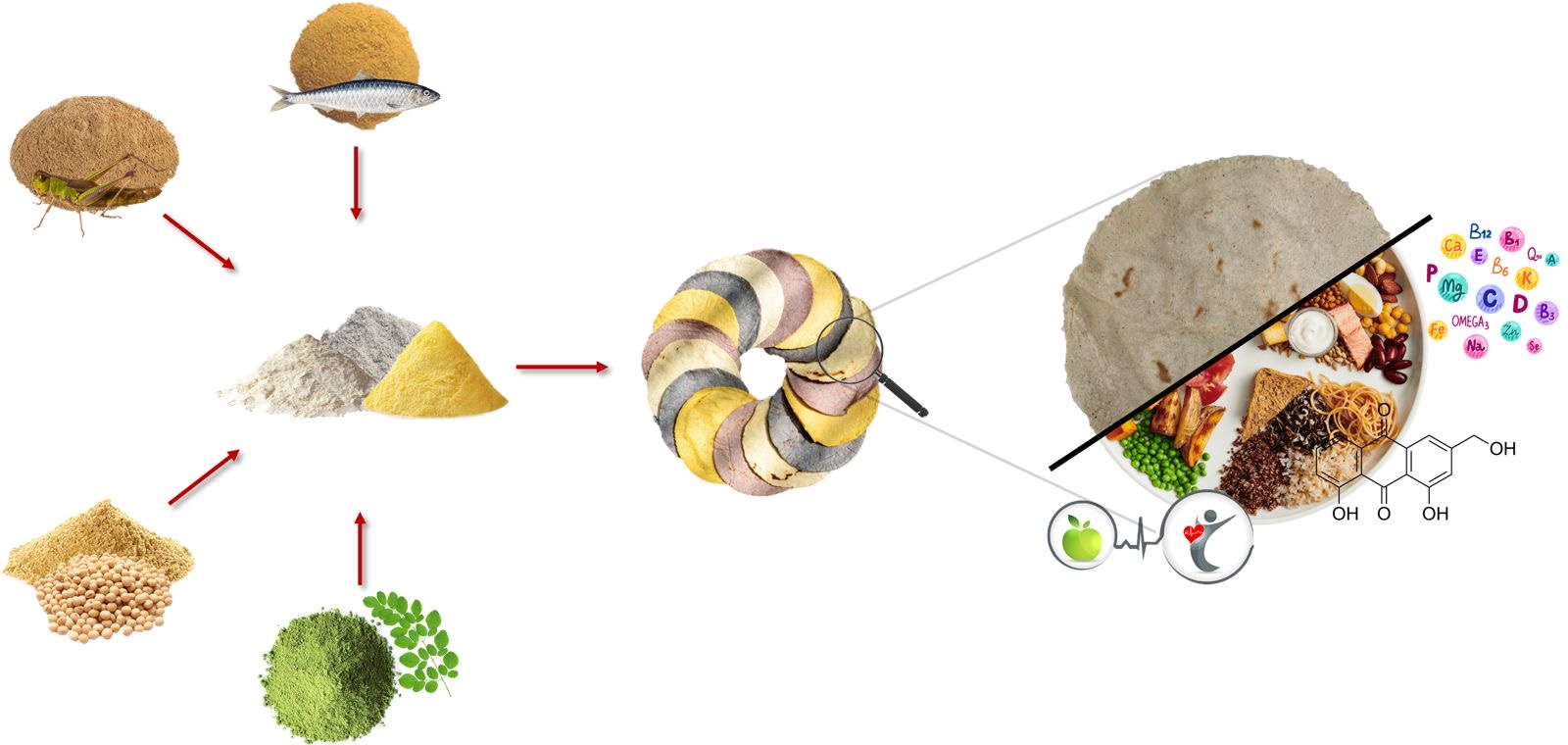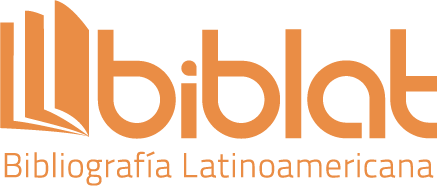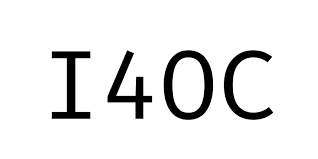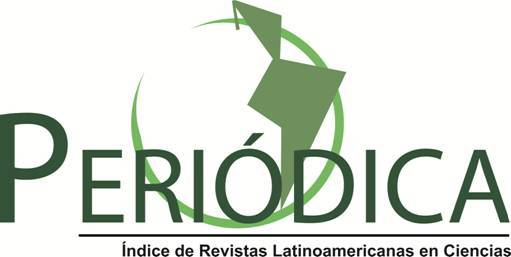Fortified Maize Tortilla: from the traditional Mesoamerican diet to functional food
DOI:
https://doi.org/10.18633/biotecnia.v27.2269Keywords:
ayocote, bioactive compounds, diet, health, queliteAbstract
Maize is an ancient crop whose domestication dates from six to ten thousand years ago in southwestern Mexico. It is one of the most important crops, with a global production volume of 1, 217 billion tons during the 2021 – 2022 cycle.
In Mexico, maize has economic and commercial importance, and its uses are ancestral and versatile to obtain a wide variety of products, including oil, popcorn, syrup, corn, tamales, atole, and the most recognized tortillas. Tortilla is one of the main staple foods in our diet, with a consumption of up to 75 kg/per capita per year, contributing with 38.8 and 49.1 % of protein and calcium, respectively, and 45.2 % of the dailycalorie intake. Due to its high consumption, it is an excellentvehicle for the development of innovative products by theaddition of functional ingredients that increase the nutritional
quality (for instance, mineral or vitamin deficiencies) ofour diet and confer benefits to consumer’s health, being ofparticular interest the so-called underutilised species such as ayocote beans and quelites. The review aims to explore fortifying maize products (tortillas), with underutilised ingredients to enhance nutrition, address deficiencies, promote health benefits, and agricultural diversification.
Downloads
References
FAO. 2016. Save and Grow in practice: maize, rice, wheat - A guide to sustainable cereal production.
FAOStat. (2021). FAO Stat. FAO, Rome. http://www.fao.org/faostat.
Poole, N., Donovan, J., Erenstein, O. 2021.Viewpoint: Agri-nutrition research: Revisiting the contribution of maize and wheat to human nutrition and health. Food Policy, 100, 101976. https://doi.org/10.1016/j.foodpol.2020.101976.
USDA, 2022. Grain and Feed Annual.
Erenstein, O., Jaleta, M., Sonder, K., Mottaleb, K., Prasanna, B.M. (2022) . Global maize production, consumption and trade: trends and R&D implications. Food Sec., 14, 1295–1319. https://doi.org/10.1007/s12571-022-01288-7.
Tanumihardjo, S.A., McGulley, L., Roh, R., Lopez-Ridaura, S., Palacios-Rojas, N., and Gunaratna, N.S. (2020). Maize agro-food systems to ensure food and nutrition security in reference to the sustainable development goals. Global Food Security, 25, 100327. https://doi.org/10.1016/j.gfs.2019.100327.
Tedeschi, A., Cerrato, D., Meneti, M. (2022). Is the Potential for multi-functional use of industrial hemp greater than maize under saline conditions? Sustainability, 14(23), 15646. https://doi.org/10.3390/su142315646.
Quintero-Herrera, S., Avellaneda, J.F.R., Zwolinski, P., Evrad, D., Rivas-García, P. 2023. Towards a cleaner mexican tortilla industry: a prospective life cycle assessment approach. Procedia CIRP, 116, 504-509. https://doi.org/10.1016/j.procir.2023.02.085.
Kaushal, M., Sharma, R., Vaidya, D., Gupta, A., Saini, H.K., Anand, A., Thakur, M., Verma, A., Thakur, M., Piryanka, Dileep, K.C. (2023). Maize: an underexploited golden cereal crop. Cereal Research Com-munications, 5, 13–14. https://doi.org/10.1007/s42976-022-00280-3.
Knowledge Sourcing Intelligence LLP (KSILLP). (2022). Global corn tortilla market – forecasts from 2022 to 2027.
USDA. FoodData Central Search Results. Tortilla, corn. (2022) Available from https://fdc.nal.usda.gov/fdc-app.html#/food-details/1100857/nutrients. Accesed 18 May, 2023.
Yaqoob, S.; Cai, D.; Liu, M.; Zheng, M.; Zhao, C.B.; Liu, J.S. Characterization of microstructure, phys-icochemical and functional properties of corn varieties using different analytical techniques. Int. J. Food Prop. 2019, 22, 572–582. https://doi.org/10.1080/10942912.2019.1596124.
Rouf Shah, T.; Prasad, K.; Kumar, P. Maize—A potential source of human nutrition and health: A review. Cogent Food Agric. 2016, 2, 1166995. https://doi.org/10.1080/23311932.2016.1166995.
Gutiérrez-Uribe, J.A.; Rojas-García, C.; García-Lara, S.; Serna-Saldivar, S.O. (2014). Effects of lime-cooking on carotenoids present in masa and tortillas produced from different types of maize. Cereal Chem., 91(5), 508-512. http://dx.doi.org/10.1094/CCHEM-07-13-0145-R.
Caire-Juvera, G., Vázquez-Ortiz, F. A., & Grijalva-Haro, M. I. (2013). Amino acid composition, score and in vitro protein digestibility of foods commonly consumed in the northwest Mexico. Nutrición Hospitalaria, 28(2), 365-371. https://doi.org/10.3305/nh.2013.28.2.6219.
Colín-Chávez, C., Virgen-Ortiz, J.J., Serrano-Rubio, L.E., Martínez-Tellez, M.A., Astier, M. (2020). Comparison of nutritional properties and bioactive compounds between industrial and artisan fresh tortillas from maize landraces. Curr. Res. Nutr. Food Sci., 3, 189-194. https://doi.org/10.1016/j.crfs.2020.05.004.
Lopez-Martinez, L. X., Parkin, K. L., & Garcia, H. S. (2011). Phase II-Inducing, Polyphenols Content and Antioxidant Capacity of Corn (Zea mays L.) from Phenotypes of White, Blue, Red and Purple Colors Processed into Masa and Tortillas. Plant Foods for Human Nutrition, 66(1), 41–47. doi:10.1007/s11130-011-0210-z.
Sánchez, F., Salinas, M.Y., Vazquez, C., Veláquez, C., Aguilar, G., 2007. Efecto de las prolaminas del grano de maiz (Zea mays L.) sobre la textura de la tortilla. Arch. Latinoam. Nutr., 57, 295–301. https://doi.org/10.5154/r.inagbi.2010.08.009.
Enrique, E.I., Villegas, E., Vasal, S. (1984). A comparative study of protein changes in normal and quality protein maize during tortilla making. Cereal Chem., 63(5), 446-451.
Retes-Mantilla, R.G., Torres-Sanabria, G., Garrido-Roldán, S. (2014). Un modelo econométrico de la demanda de tortilla de maíz en México, 1996-2008. Estudios sociales (Hermosillo, Son.), 22(43), 37-59. Recuperado en 26 de mayo de 2023, de http://www.scielo.org.mx/scielo.php?script=sci_arttext&pid=S0188-45572014000100002&lng=es&tlng=es.
Cuevas-Martínez, D., Moreno-Ramos, C., Martínez-Manrique, E., Moreno-Martínez, E., Mén-dez-Albores, A. (2010). Evaluación nutricional y textural de tortillas de maíz-frijol blanco nixtamalizadas. Interciencia, 35(11), 828-832. Recuperado en 26 de mayo de 2023, de https://www.interciencia.net/wp-content/uploads/2018/01/828-c-ALBORES-5.pdf.
SIAP. Servicio de Información Agrolimentaria y Pesquera. Anuario estadístico de la producción agrícola. (2018). Avaible from https://nube.siap.gob.mx/cierreagricola/. Accesed 28 May, 2023.
SAGARPA-SIAP. Atlas Agrolimentario 2018. (2018). Avaible from https://nube.siap.gob.mx/gobmx_publicaciones_siap/pag/2018/Atlas-Agroalimentario-2018. Accesed 28 May, 2023.
Kuger, J., Taylor, J.R.N., Ferruzi, M.G., Debelo, H. (2020). What is food-to-food fortification? A working definition and framework for evaluation of efficiency and implementation of best practices. Compr. Rev. Food Sci. Food Saf., 19(6), 3618-3658. https://doi.org/10.1111/1541-4337.12624.
Syarifah, A.N., Amrih, D. (2021). The study of addition variety of vegetable flour on physical character-istics of tortilla chips. J. Phys.: Conf. Ser., 1823, 012033. doi:10.1088/1742-6596/1823/1/012033.
Hosseini, S.M., Soltanizadeh, N., Mirmoghtadaee, P., Banavand, P., Mirmoghtadaie, L., Shojaee-Aliabadi, S. (2018). Gluten-free products in celiac disease: Nutritional and technological challenges and solutions. J. Res. Med. Sci, 23(1), 109. 10.4103/jrms.JRMS_666_18.eCollection.2018.
Acevedo-Martinez, K.A., Gonzalez de Mejia, E. (2021). Fortification of maize tortilla with an optimized chickpea hydrolysate and its effect on DPPIV inhibition capacity and physicochemical characteristics. Foods, 10(8), 1835.
Pérez-Alva, A., Baigts-Allende, D.K., Ramírez-Rodrigues, M.M. (2021). White maize tortillas fortified with brown algae Macroystis pyrifera. In L. Ricardo-Hernández & M. A. Serrano-Meneses (Eds.), Technology, science and culture: a global vision, volume IV (pp. 315-328). IntechOpen. http://dx.doi.org/10.5772/intechopen.105162.
Chuck Hernández, C.E., Serna-Saldivar, S.O. (2019). Soybean-fortified nixtamalized corn tortillas and related products. In Preedy, V. R. & Watson, R. R (Eds.), Flour and Breads and Their Fortification in Health and Disease Prevention (pps. 319–332). Academic Press. http://doi.org/10.1016/b978-0-12-814639-2.00025-3.
Hernández-Reyes, K. E., Montemayor-Mora, G., Pérez-Carrillo, E., De la Rosa-Millán, J., Gar-cía-Villanueva, C., & Serna-Saldívar, S. O. (2018). Effect of soybean bagasse addition on texture, sensory properties and protein quality of maize tortillas. Cereal Chem., 96(2), 283-291. https://doi.org/10.1002/cche.10120.
Mashau, M.E., Mabodze, T., Tshiakhatho, O.J., Silungwe, H., Ramashia, S.E. (2020) Evaluation of the Content of Polyphenols, Antioxidant Activity and Physicochemical Properties of Tortillas Added with Bambara Groundnut Flour. Molecules, 25(30), 3035. https://doi.org/10.3390/molecules25133035.
Ezzelden, A. M., Mansour, E. H., Ali, M. M., Hassan, A. A., El-Bedawey, A. A. (2019). Quality char-acteristics of corn tortilla prepared with different levels of rice bran protein concentrate. Menoufia J. Food & Dairy Sci., 4, 141-151. http://dx.doi.org/10.21608/mjfds.2019.174898.
Alvarez-Poblano, L., Roman-Guerrero, A., Vernon-Carter, E. J., & Alvarez-Ramirez, J. (2020). Exoge-nous addition of muicle (Justicia spicigera Schechtendal) extract to white maize tortillas affects the anti-oxidant activity, texture, color, and in vitro starch digestibility. LWT, 133, 110120. https://doi.org/10.1016/j.lwt.2020.110120.
Salazar, D., Rodas, M., Arancibia, M. (2020). Production of tortillas from nixtamalized corn flour enriched with Andean crops flour: Faba-bean (Vicia faba) and white-bean (Phaseolus vulgaris). Emir. J. Food Agric., 32(10), 731-738. https://doi.org/10.9755/ejfa.2020.v32.i10.2179.
Inyang, U.E., Akindolu, B.E., Elijah, A.I. (2019). Nutrient composition, amino acid profile and an-ti-nutritional factors of nixtamalized maize flour supplemented with sprouted soybean flour. European J. Nutr. Food Saf., 9(1), 41-51. https://doi.org/10.9734/EJNFS/2019/46150.
García-Rojas, D. A., Meneses, M. E., Martínez-Carrera, D., Figueroa-Cárdenas, J. D., Sánchez-Medina, M. A., Bonilla-Quintero, M., Petlacalco-Sánchez, B., Martínez-Gutiérrez, G. A., Pérez-Herrera, A. (2020). Effect of Pleurotus agaves mushroom addition on the physicochemical and sensory properties of blue maize tortillas produced with traditional and ecological nixtamalization. Food & Function, 11(10), 8768–8779. https://doi.org/10.1039/d0fo01018a.
Suriano, S., Balconi, C., Valoti, P., & Redaelli, R. (2021). Comparison of total polyphenols, profile an-thocyanins, color analysis, carotenoids and tocols in pigmented maize. LWT, 144, 111257. https://doi.org/10.1016/j.lwt.2021.111257.
Sánchez-Villa, C. E., Zepeda-Bautista, R., Ramírez-Ortiz, M. E., & Corzo-Ríos, L. J. (2020). Nixtamalized tortillas supplemented with proteins isolated from Phaseolus coccineus and huauzontle (Chenopodium berlandieri subsp. nuttalliae) flour: rheological, textural, and sensorial properties. International Journal of Gastronomy and Food Science, 100274. https://doi.org/10.1016/j.ijgfs.2020.100274.
Gámez-Valdez, L. C., Gutiérrez-Dorado, R., Gómez-Aldapa, C. A., Perales-Sánchez, J. X. K., Mi-lán-Carrillo, J., Cuevas-Rodríguez, E. O., Mora-Rochín, S., & Reyes-Moreno, C. (2021). Effect of the extruded amaranth flour addition on the nutritional, nutraceutical and sensory quality of tortillas produced from extruded creole blue maize flour. Biotecnia, 23(2), 103-112. https://doi.org/10.18633/biotecnia.v23i2.1385.
León-Murillo, J.R., Gutiérrez-Dorado, R., Reynoso-Camacho, R., Milán-Carrillo, J., Perales-Sánchez, J.X.K., Cuevas-Rodríguez, E.O., Reyes-Moreno, Cuauhtémoc. (2021). Tortillas made with extruded flours of blue maize and chía seeds as an nutritious and nutraceutical food option. Agrociencia, 55(6), 487-506. https://doi.org/10.47163/agrociencia.v55i5.2555.
Contreras Jiménez, B., Oseguera Toledo, M. E., Garcia Mier, L., Martínez Bravo, R., González Gutiérrez, C. A., Curiel Ayala, F., & Rodriguez-Garcia, M. E. (2020). Physicochemical study of nixtamalized corn masa and tortillas fortified with “chapulin” (grasshopper, Sphenarium purpurascens) flour. CyTA – J. Food, 18(1), 527–534. https://doi.org/10.1080/19476337.2020.1794980.
López-Alarcón, M., Montalvo-Velarde, I., Bernal-Gracida, L., Barbosa-Cortés, M.L. (2018). Nixtamalized maize supplementation with a sardine protein concentrate to improve the biological value of tortillas. Gac. Med. Mex., 154(3), 327-334. https://doi.org/10.24875/GMM.17003373.
Heredia-Sandoval, N.G., Santiaguin-Padilla, A.J., Granados-Nevarez, M.C., Scheuren-Acevedo, S.M., Islas-Rubio, A.R., Mazorra-Manzano, M.A., García-Sánchez, G., Ramírez-Suarez, J.C. (2021). Sup-plementation of corn tortilla with freeze-dried jumbo squid muscle flour: physicochemical properties and microbiological stability during storage. Biotecnia, 23(2), 134-140. https://doi.org/10.18633/biotecnia.v23i2.1420.
Rodiles-López, J. O., Arriaga-Martínez, L. P., Martínez-Flores, H. E., Zamora-Vega, R., & Gar-cía-Martínez, R. M. (2019). Desarrollo de una tortilla adicionada con harinas de aguacate y nopal y su efecto en la reducción de colesterol, triglicéridos y glucosa en ratas. Biotecnia, 21(2), 71–77. https://doi.org/10.18633/biotecnia.v21i2.909.
Narvaez, J. J. U., Medina, U. U., Rodríguez, D. M. (2023). Nutritional and functional properties of corn tortillas added with cabbage as an option for diabetes management. Int. J. Gastron Food Sci., 32, 10076. https://doi.org/10.1016/j.ijgfs.2023.100706.
Luna, G. L., Martin-Gonzalez, F., Mauer, L. J., Liceaga, A. M. (2020). Cricket (Acheta domesticus) protein hydrolysates’ impact on the physicochemical, structural, and sensory properties of tortillas and tortilla chips. J. Insects as Food Feed, 7(1), 109-120. https://doi.org/10.3920/JIFF2020.0010.
Argüello-García, E., Martínez-Herrera, J., Córdova-Téllez, L., Sánchez-Sánchez, O., & Corona-Torres, T. (2017). Textural, chemical and sensorial properties of maize tortillas fortified with nontoxic Jatropha curcas L. flour. CyTA – J. of Food, 15(2), 301–306. https://doi.org/10.1080/19476337.2016.1255915.
Artavia, G., Arias-Álvarez, C., Cortés-Herrera, C., Granados-Chinchilla, F. (2022). Physicochemical and sensory assessment of partial corn substitutions with carotenoid-containing non-traditional flours during tortilla preparation. Cogent Food Agric., 8, 2122273. https://doi.org/10.1080/23311932.2022.2122273.
Rodiles-López, J. O., Arriaga-Martínez, L. P., Martínez-Flores, H. E., Zamora-Vega, R., García-Martínez, R. M. (2019). Desarrollo de una tortilla adicionada con harinas de aguacate y nopal y su efecto en la re-ducción de colesterol, triglicéridos y glucosa en ratas. Biotecnia, 21(2), 71–77. https://doi.org/10.18633/biotecnia.v21i2.909.
Galani, Y. J. H., Orfila, C., & Gong, Y. Y. (2020). A review of micronutrient deficiencies and analysis of maize contribution to nutrient requirements of women and children in Eastern and Southern Africa. Critical Reviews in Food Science and Nutrition, 1–24. https://doi.org/10.1080/10408398.2020.1844636.
Rojas-Molina I, Mendoza-Avila M, Cornejo-Villegas MLÁ, Real-López AD, Rivera-Muñoz E, Rodrí-guez-García M, Gutiérrez-Cortez E. (2020). Physicochemical Properties and Resistant Starch Content of Corn Tortilla Flours Refrigerated at Different Storage Times Foods, 9(4), 469. https://doi.org/10.3390%2Ffoods9040469.
Olson, R., Gavin-Smith, B., Ferraboschi, C., Kraemer, K. (2021). Food Fortification: The Advantages, Disadvantages and Lessons from Sight and Life Programs. Nutrients, 13(4), 1118. https://doi.org/10.3390/nu13041118.
Codex Alimentarius. (1987). General principles for the addition of essential nutrients to foods. Available at https://www.fao.org/fao-who-codexalimentarius/sh-proxy/en/?lnk=1&url=https%253A%252F%252Fwork-space.fao.org%252Fsites%252Fcodex%252FStandards%252FCXG%2B9-1987%252FCXG_009e_2015.pdf.
Schierhorn, C. (2020). Cold Snacks Heat up. Food Technol., 74, 27–38
León-Murillo, J.R., Gutiérrez-Dorado, R., Reynoso-Camacho, R., Milán-Carrillo, J., Perales-Sánchez, J.X.K., Cuevas-Rodríguez, E.O., Reyes-Moreno, C. (2021). Tortillas Made with Extruded Flours of Blue Maize and Chía Seeds as a Nutritious and Nutraceutical Food Option. Agrociencia, 55, 487–506. https://doi.org/10.47163/agrociencia.v55i6.2555.

Downloads
Published
How to Cite
Issue
Section
License
Copyright (c) 2025

This work is licensed under a Creative Commons Attribution-NonCommercial-ShareAlike 4.0 International License.
The journal Biotecnia is licensed under the Attribution-NonCommercial-ShareAlike 4.0 International (CC BY-NC-SA 4.0) license.
















_(2).jpg)







